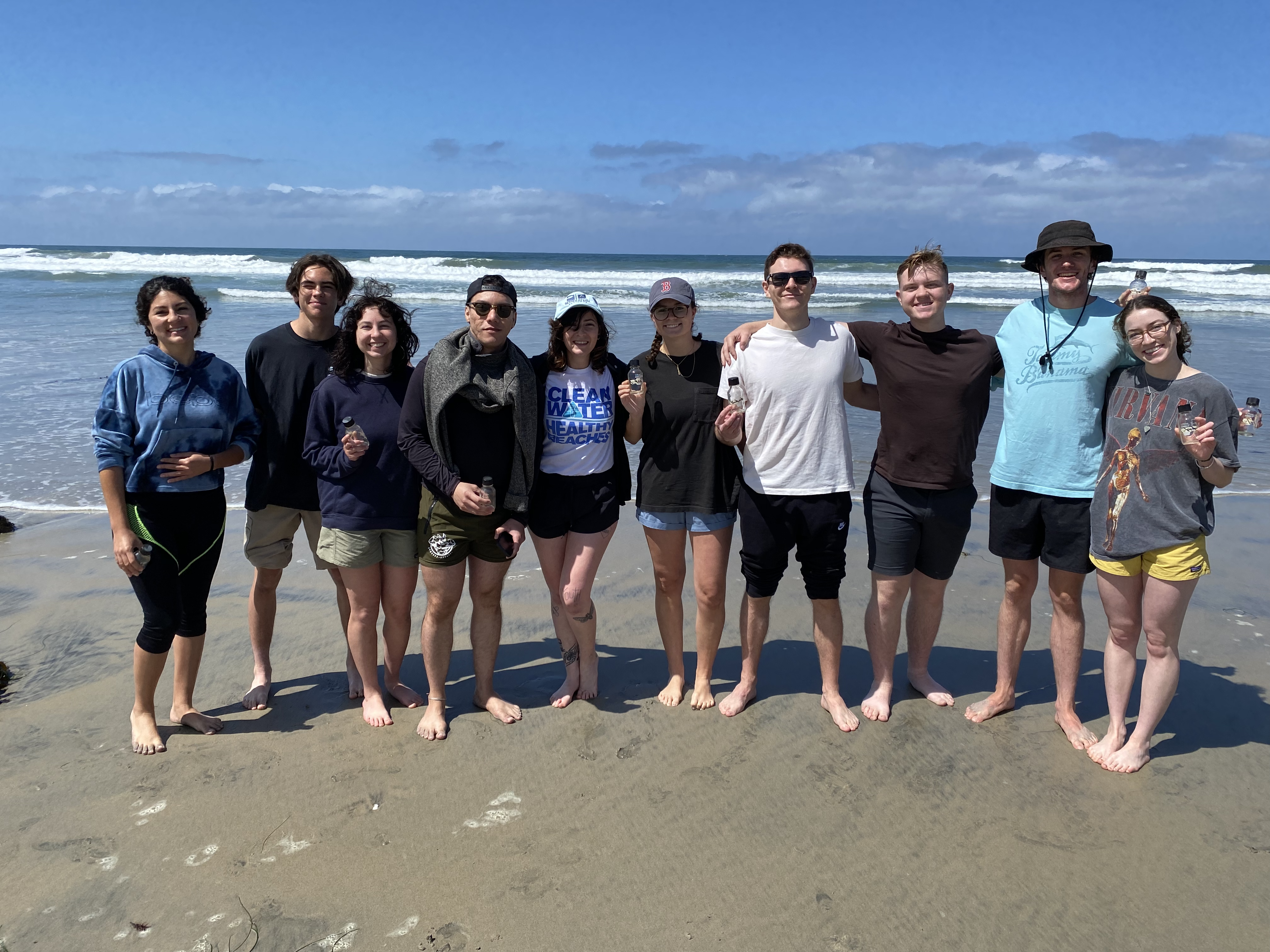
For those who live in South Bay, especially in Imperial Beach (IB), it's no secret that the beaches and community are facing a significant public health crisis and environmental justice issue due to ongoing pollution and water quality concerns. The Surfrider Foundation's 2023 Clean Water Report named Imperial Beach one of its top ten priority beaches: "In Southern California, we are working across jurisdictions and even borders to advocate for wastewater infrastructure solutions to reduce contamination in the international watershed of the Tijuana River."
This annual report gives an in-depth look at Surfrider's Clean Water programs and how Surfrider Chapters leverage them to combat local pollution issues, providing the water quality information needed to keep families safe at the beach. These priority beaches represent various recreational waters and access points that are important to local communities, yet water quality conditions may pose a risk to public health.
100% of the samples collected at Imperial Beach failed to meet the state health standards.
Through our grassroots campaigns and programs, Surfrider is fighting at the local, state, and federal levels to ensure that our beloved ocean and coasts are clean and safe for all people to enjoy.
Advocating for solutions to one of the most significant public health and environmental justice emergencies in the country.
In early July 2024, Bree Steffen with Spectrum News followed two of San Diego’s Blue Water Task Force (BWTF) volunteers to sample and process the waters of IB. Acxel Herrera-Ibarra is one of the volunteers who takes samples from IB, and Rachel Weinstein is the program's volunteer lead.
“When he visits the beaches at Imperial Beach, Acxel Herrera-Ibarra has traded in his swimsuit for layers of protective gear. A stretch of surf in Imperial Beach is so toxic many San Diego County officials have made repeated calls for a state of emergency because of pollution from the Tijuana River Watershed flowing into the ocean.”
The volunteers who sample IB wear protective gear before entering the water and rinse off afterward. Once Acxel takes the samples, he transports them to Surfrider San Diego’s office in Hillcrest, which houses one of our two BWTF labs in San Diego County. At the lab, Rachel greets Bree and Acxel and demonstrates how the BWTF lab measures fecal indicator bacteria levels in recreational waters and compares them to water quality standards set to protect public health. The full story can be found here.
The work being done by Surfrider and its dedicated volunteers is crucial in addressing the pollution crisis affecting Imperial Beach and the surrounding communities. Through persistent advocacy and grassroots efforts, we are striving to create lasting solutions that will protect our ocean, beaches, and public health.
The contamination from the Tijuana River Watershed is a pressing issue that demands immediate attention. By supporting initiatives like Surfrider's Clean Water programs and the Blue Water Task Force, we can push for legislative action and ensure safer recreational waters for everyone.
We invite community members to join us in this fight for clean water and environmental justice. Whether through volunteering, spreading awareness, or supporting Surfrider's initiatives, your involvement can make a difference.
Together, we can advocate for a cleaner and safer future for Imperial Beach and all who cherish our coastal environments.
Note Regarding South Bay
While testing in Imperial Beach varies due to volunteer availability, the continuous daily outflow of sewage and beach closures continues. For more information regarding our advocacy for clean water in the South Bay, check out our Clean Border Water Now page and/or sign up to attend our next meeting here.
For up-to-date water quality results in IB and the South Bay, please visit sdbeachinfo.com. The County tests South Bay water quality at an elevated schedule (daily at many locations). For info on how to find specific water quality samples in the South Bay and beyond, check out this blog post.
Our BWTF & the Beach & Bay Water Quality Program both test recreational waterways throughout the county for bacteria levels. The mission is to notify the public of results/health risks so they can make an informed decision about where to swim.
The BWTF uses IDEXX Enterolert/Quanti-tray Sealer methodology to measure enterococcus bacteria levels in water samples. This method is an EPA-approved method for sampling recreational waters and is easy for volunteers and students to learn and use competently. Bacteria results are obtained after a 24 hour sample incubation period. Unless otherwise noted, BWTF samples on Thursdays in order to provide test results by Friday afternoon, just in time for the weekend. BWTF is not intended to compete with the County’s much more robust testing schedule; it’s meant to supplement it.
The Beach & Bay Water Quality Program uses a droplet digital polymerase chain reaction (ddPCR) method. The ddPCR method is more sensitive than a culture method and impacted less by environmental factors, allowing it to be more accurate in measuring bacteria and illness risk, and more protective of public health. The ddPCR method provides faster, same-day results. When bacteria levels exceed State health standards and prompt advisories or closures, DEHQ is able to lift them faster by using ddPCR. County testing is done on different days for different locations.
